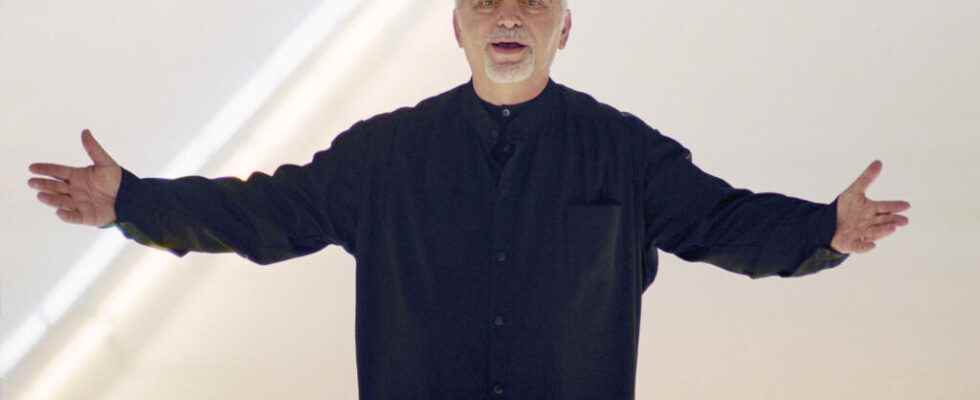Spanish fashion designer Paco Rabanne died on Friday February 3 in France at the age of 88. Mystical, sometimes controversial, but especially famous from the 1960s thanks to his metallic dresses, he brought a breath of modernity to the world of fashion, with innovative shows and perfumes that have become essentials.
In fashion history lessons, Paco Rabanne is often cited as being one of the first to have introduced music into fashion shows. From his first presentations, in 1966, he called on Pierre Boulez, the magician of concrete music, who conceived Marteau sans maître, an original composition that punctuated his parade manifesto.
The Spanish couturier, who was also one of the first to put black girls on the catwalk, made models dance under the dumbfounded eyes of a public accustomed to fashion shows a bit stuck, still inspired by the haute couture of the before the war. Today, it looks like he’s “making the buzz”. But at the time, it was just an alternative way of expressing oneself.
Born in 1934 in the Spanish Basque Country under the name of Francisco Rabaneda y Cuervo, the couturier was the son of a commander of the republican forces who was shot by the Francoists, and caused his family to flee to France. Once in Paris, he studied architecture at the Beaux-Arts between 1952 and 1964, where he took a liking to raw materials, such as concrete or metal. But once he graduated, he forgot about buildings and amused himself by producing jewelery and plastic buttons, which he sold to names such as Dior and Givenchy.
His love of fashion was born from childhood, his mother was a seamstress for his compatriot Cristóbal Balenciaga. However, actual fashion design did not arrive until 1965, when he began making his first dresses. And even if he rubbed shoulders with the work of sewing masters as a supplier, it is out of the question for him to do like everyone else. Alternative again, instead of fabric, thread and a needle, her dresses will instead be constructed with pliers as the main tool and metal discs and chains as raw materials. A year later, his famous “twelve improbable dresses” officially launched his house.
” He recreated the woman »
The success is immediate. So much so that in the film Who are you Polly Maggoo? by William Klein, released in 1966, a character is clearly inspired by Paco Rabanne, who becomes a temperamental couturier on the big screen, presenting a collection “absolutely admirable and obviously not convenient”, as we hear in one of the quotes from the feature film. The film’s parade ends with the designer making his salute, craftsman’s pliers in hand, shouting: “He has recreated the woman”.
This “re-created” woman has often been famous. From Brigitte Bardot to Jane Birkin, via Jeanne Moreau or Anouk Aimée, all the fashionable girls have worn her creations, like her iconic metal mesh dresses. Like Françoise Hardy in a mini-dress made from gold plates encrusted with diamonds, or even Audrey Hepburn dressed in a dress with metallic discs in Voyage à deux, by Stanley Donen, in 1967. Without forgetting Jane Fonda in 1968 in Barbarella, Roger Vadim’s film, with her outfits made of plastic pieces. Iconic images still today.
Visionary or green?
The couturier continues his research by always highlighting unexpected and revisited materials. From the 1980s, he became interested in sponges, newspaper, aluminum, cellular concrete and especially recycling. Years later, he explained his approach by saying he wanted ” show that we could dress in all the unlikely materials that will remain on the Earth when we will be 20 billion people and there will be no more wool or cotton “.
An apocalyptic visionary, he claimed to be producing for an era in which ” we will only have our garbage and we will have to recycle it », like these socks that he transforms into sweater sleeves. An approach that takes on another resonance today, at a time when terms like “upcycling” are becoming commonplace in the world of fashion.
The end of the world
Moreover, this premonitory side has made Paco Rabanne a character who is sometimes laughed at. Behind his appearance as a mystical guru, he said he was passionate about the occult sciences, believed in reincarnation and claimed to have seen God at least three times in his life. But it is above all his premonitions about the end of the world that go less well. In the book 1999, fire from heaven, he announces that the Mir space station will crash into Earth on August 11, 1999, at 11:22 am precisely. The kind of forecast that does not go unnoticed.
But beyond this picturesque side, Paco Rabanne had nothing of a lunatic. The way he transformed his fashion house into a profitable business, especially with the fragrances he launched in 1973, is proof of this.
Since 1986, his brand has belonged to the Spanish group Puig, and the couturier signed his last collection there in 1999, before retiring. But the success of his brand continues thanks to the perfumes, some of which have been among the best-selling on the market. Like One Million, one of the latest to date, which became the number one seller for men for several years.
In recent seasons, we have heard a lot about the Paco Rabanne brand. The work of Breton designer Julien Dossena, artistic director of the house since 2013, has brought freshness and modernity to a name sometimes forgotten by the young generation of fashion enthusiasts. And yet, Paco Rabanne was, for a very long time, one of the most fascinating characters in this industry.
